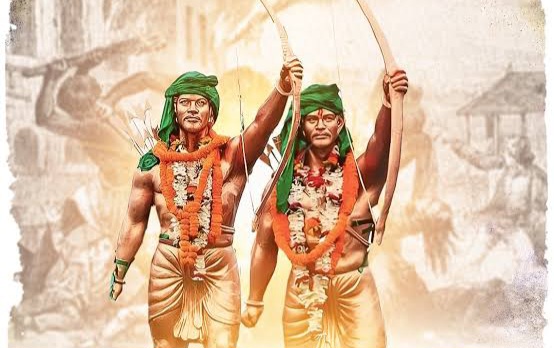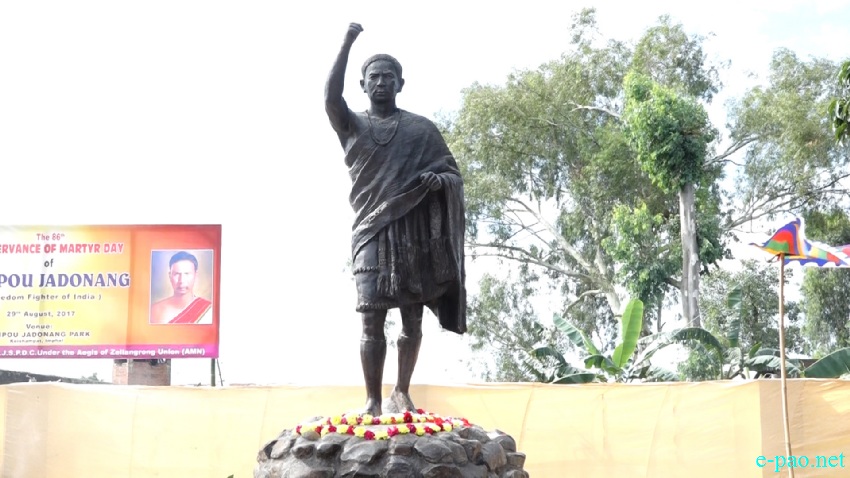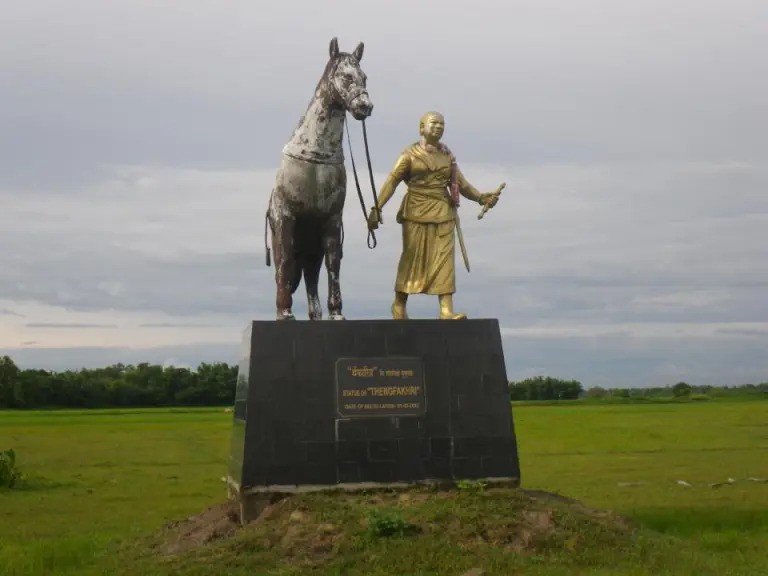By Dr. Bhupendra Kumar Sullere
The history of India's freedom struggle is incomplete without recognizing the contributions of its tribal communities. While mainstream narratives often glorify leaders from urban and elite backgrounds, the tribal population of India was among the first to revolt against British colonialism. One such monumental event was the Santhal Hul (Rebellion) of 1855, remembered every year as Hul Diwas on 30th June.
Hul Diwas stands as a symbol of tribal identity, self-respect, and the uncompromising fight for land and dignity.
Meaning and Significance of the Word 'Hul'
In the Santhali language, the word 'Hul' means "Rebellion" or "Uprising." However, for the Santhals, it was much more than that. It was a call for:
Freedom from exploitation
Preservation of their land, forests, and culture
Resistance against foreign rulers and native landlords
It was a historic moment when tribal India rose in arms against the most powerful colonial empire of the time.
Historical Background: The Causes Behind Hul
By the mid-19th century, the British East India Company had deeply entrenched itself in the tribal regions of present-day Jharkhand, parts of Bihar, and West Bengal, collectively known as the Santhal Pargana.
Major Causes of the Rebellion:
1. Land Alienation:
Tribal lands were being taken away by British officials and landlords.
Unjust land revenue policies.
2. Debt Trap:
Local moneylenders (Mahajans) imposed heavy interest rates.
Tribals became bonded laborers on their own land.
3. Exploitation by Zamindars and Police:
Harassment, physical abuse, and forced labor.
4. Destruction of Tribal Social Structure:
Disrespect for tribal customs, traditions, and autonomy.
5. Loss of Livelihood:
Forest resources were commercialized.
Hunting and shifting cultivation were restricted.
This created unbearable social and economic conditions, turning simmering anger into organized resistance.
The Beginning of the Hul Rebellion
On 30th June 1855, two brave tribal brothers, Sidhu Murmu and Kanhu Murmu, along with their siblings Chand Murmu and Bhairav Murmu, mobilized around 10,000 Santhals in Bhognadih village (now in Jharkhand).
Declaration of War: "We shall fight for our land, our identity, and our people, even if it means sacrificing our lives."
Armed with traditional weapons like bows and arrows, axes, and spears, the Santhals declared an open war against:
The British colonial administration
Local Zamindars
Corrupt police and moneylenders
The Spread and Nature of the Rebellion
The Hul Rebellion quickly spread across Dumka, Sahebganj, Rajmahal, and Bhagalpur.
Key Characteristics of the Rebellion:
Mass Participation: Men, women, and even children joined.
Guerrilla Warfare: Santhals used their knowledge of the terrain for ambush attacks.
Disruption of British Administration: Police stations, revenue offices, and colonial outposts were attacked.
Symbol of Unity: Tribal communities that were traditionally divided came together under one cause.
For nearly 6 months, the Santhal warriors posed a serious challenge to the colonial government.
British Suppression: The Brutal Response
Alarmed by the scale and intensity of the rebellion, the British deployed a large contingent of army soldiers, including artillery units.
Tactics Used by the British:
Indiscriminate firing on unarmed villagers.
Mass killings.
Burning of tribal villages.
Capture and execution of leaders.
Martyrdom:
Sidhu and Kanhu Murmu, along with thousands of their fellow warriors, were martyred.
Their sacrifice, however, left an indelible mark on India's freedom movement.
Aftermath and Immediate Outcomes
Despite the eventual military defeat, the Hul Rebellion forced the British government to acknowledge the tribal grievances.
Administrative Changes:
1. Creation of Santhal Pargana District (1855):
To ensure better governance of tribal areas.
2. Santhal Pargana Tenancy Act (1876):
Aimed to protect tribal land rights.
3. Policy Reforms:
Efforts to limit the powers of moneylenders and landlords.
Though these reforms were limited, they were direct results of the tribal uprising.
Cultural and Social Impact
1. Awakening of Tribal Consciousness:
Santhals became more politically aware and socially organized.
2. Literary and Oral Traditions:
Songs, folklore, and oral histories kept the memory of Hul alive in tribal consciousness.
3. Symbol of Resistance:
Inspired future tribal revolts like:
Birsa Munda Movement (1890s)
Tana Bhagat Movement (1914-1920)
Hul Diwas in Contemporary Times
Celebrations and Observance:
Every year, 30th June is observed as Hul Diwas, especially in Jharkhand, Bihar, Odisha, and West Bengal.
Major Events Include:
Tributes at Bhognadih: The birthplace of the rebellion.
Cultural Programs: Santhali songs, dances, and dramatizations of the rebellion.
Political Speeches: Leaders emphasize tribal rights and justice.
Educational Seminars: On tribal history and socio-economic issues.
Relevance Today:
Struggle for Land Rights Continues: Land acquisition and displacement remain critical issues for tribal communities.
Demand for Tribal History in Curricula: Scholars and activists urge inclusion of Hul history in school and university syllabi.
Inspiration for Social Movements: Current tribal movements for forest rights and autonomy often invoke the spirit of Hul.
Academic and Intellectual Significance
1. Decolonizing Indian History:
Highlighting tribal contributions often omitted from textbooks.
2. Tribals in Freedom Struggle Discourse:
Bringing forth voices from marginalized communities.
3. Research Opportunities:
Need for further documentation and publication of oral histories.
4. Policy Advocacy:
Linking past struggles to current socio-political tribal issues like reservation, displacement, and economic rights.
Hul Diwas is not just a commemoration of a past event. It is a living reminder of the struggle for justice, dignity, and rights that continues even today.
The sacrifice of Sidhu-Kanhu, Chand-Bhairav, and thousands of Santhal martyrs teaches us that:
The fight for land and identity is fundamental to human existence.
True freedom means the empowerment of all marginalized voices.
Tribal history deserves rightful recognition in India's national narrative.
As India progresses, the spirit of Hul should guide us towards creating a more inclusive, just, and equitable society.
Selected References
1. "The Santhal Rebellion 1855-56" – Government Archives of Jharkhand
2. "Tribal Movements in India" – K.S. Singh
3. "The Politics of Tribal Identity" – Virginius Xaxa
4. "Santhal Hul and Its Legacy" – S. Murmu
5. Jharkhand Government Official Hul Day Celebration Reports






